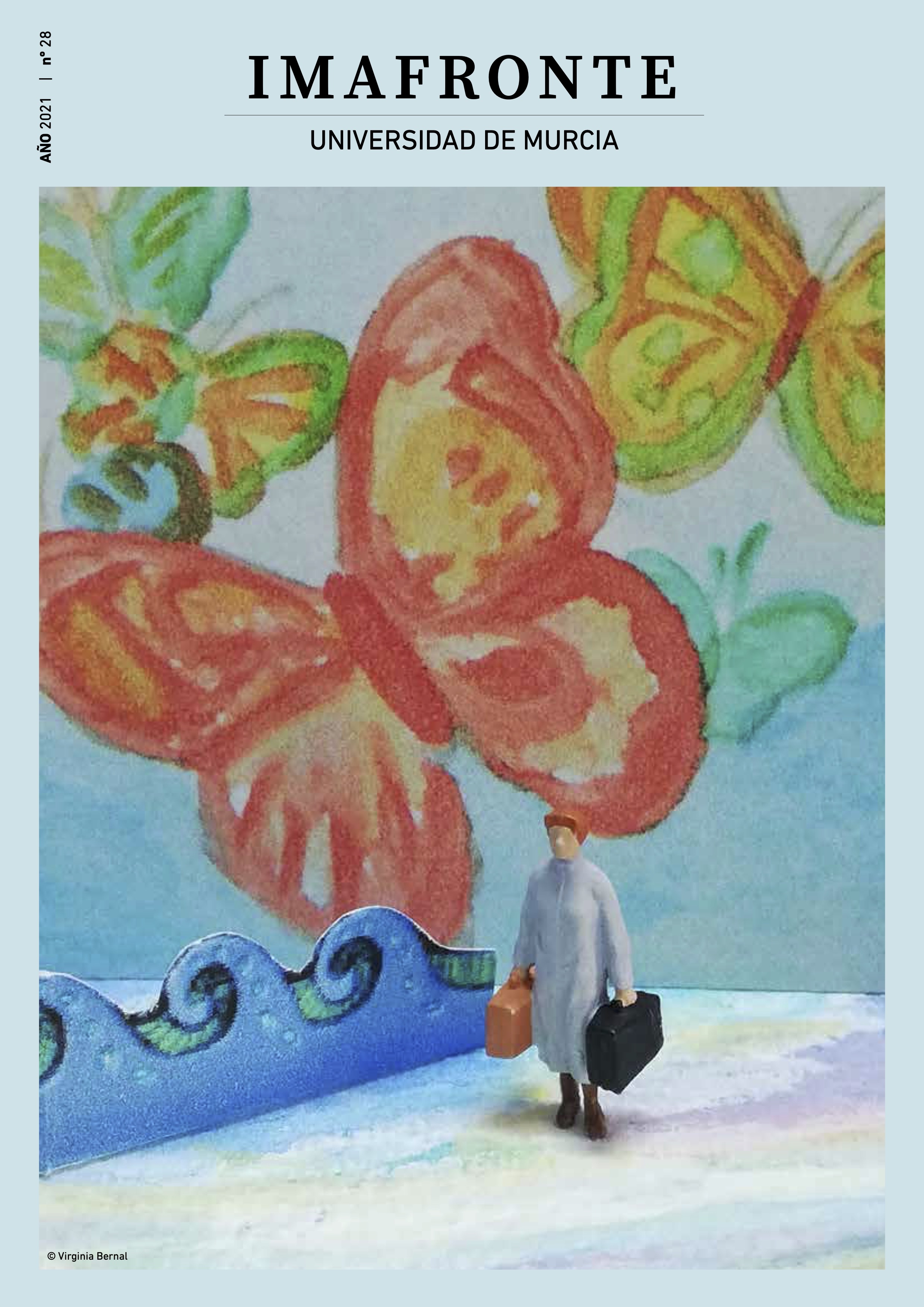The places of memory as heritage: proposed itineraries in Cartagena durint the II Republic (1931-1936)
Abstract
This work aims to develop a guide of historical itineraries of the city from Cartagena during the years of the Second Republic. The aim is to preserve an intangible heritage, those places in the memory of the republican city that refer to the identity symbols of a community. To its silent and silenced monuments. The objective is to recover the historical context of the buildings and streets and to emphasise its didactic, memorialist and cultural importance, taking into account the Law of Historical Memory. This research is divided in three chapters: the first deals with the historical context, 0). Cartagena in the 1930s; the second titled City and Memory, where the structure of the city is Y 4. analysed following Kevin Lynch. The last chapter develops three routes: politics, highlighting the Arsenal and the City Council; the cultural with the Ateneo and the Popular University and finally the prison route with the old Penal, the Castle of San Julián and the Prison of San Antón.
Downloads
-
Abstract633
-
PDF (Español (España))339
-
EPUB (Español (España))57
References
Andrés Sarasa, J. L. (1981). Cartagena: estudio de geografía urbana. Murcia: Secretariado de Publicaciones de la Universidad de Murcia.
Cabrera, M. A. (2010). La investigación histórica y el concepto de cultura política. En Culturas políticas: teoría e historia. Zaragoza: Institución Fernando el Católico, Zaragoza, 19-85.
Casal Martínez, F. (1930) [1986]. Historia de las calles de Cartagena. Cartagena: Imp. Vda. de M. Carreño, 1930. 2a ed. Murcia, Academia Alfonso X el Sabio.
Casal Martínez, F. (1933). Nuevo libro de la ciudad de Cartagena y su término municipal: comercio, industria, turismo (guía oficial). Cartagena: Imp. Vda de M. Carreño.
Celdrán, J. A. (2008). Los espacios urbanos de la ciudad de Cartagena y sus procesos de reforma. Kesse, 42, 9-16.
Chacón Bulnes, J. M. (2012). La Casa Negra: el Cuartel de Presidiarios y Esclavos de Cartagena. Cartagena: Universidad Politécnica de Cartagena.
Cuesta Bustillo, J. (1998). Memoria e historia. Un estado de la cuestión. Ayer, 32, 203-246.
Egea Bruno, P. M. (1996). Los siglos XIX y XX. En Manual de Historia de Cartagena. Cartagena: Ayuntamiento de Cartagena, Universidad de Murcia y Caja de Ahorros del Mediterráneo.
Egea Bruno, P. M. (1999). Cartagena, imagen y memoria. Murcia: Arte Libro–Rafael Amorós.
Egea Bruno, P. M. (2006). La enseñanza primaria en Cartagena durante la II República y la Guerra Civil (1931-1939). Cartagena: Áglaya.
Egea Bruno, P.M. (2011). La amnistía de febrero de 1936 en Cartagena: Verdad y versión. Aproximación a las claves de un proceso de mistificación política. Espacio, Tiempo y Forma. Serie V, Historia Contemporánea, 23, 221-242.
Erice, F. (2009). Guerras de la memoria y fantasmas del pasado. Usos y abusos de la memoria colectiva. Oviedo: Ed. Eikasia.
Ferrándiz Araujo, V. M. (2015). El Palacio Consistorial de Cartagena, ejemplo de arquitectura institucional en la España del cambio de siglo XIX- XX. P+C, 6, 19-32.
Franco, F. J. (2002). Cartagena (1931-1936). Los años de la esperanza. Cartagena: Áglaya.
Franco, F. J. (2005). República, guerra y exilio. Antonio Rosy la Generación del 27. Cartagena: Áglaya.
Gómez Vizcaíno, A. (1997). Castillos y fortalezas de Cartagena. Cartagena: AFORCA.
Henales Salamanca, J. (2017). El callejero histórico de Alicante: de la II República a nuestros días. Lugares de historia y de memoria. Tesis doctoral dirigida por José Miguel Santacreu Soler: Universidad de Alicante.
Lynch, K. (2015). La imagen de la ciudad. Barcelona: Gustavo Gili.
Martínez Leal, J. (1993). República y Guerra Civil en Cartagena (1936-1939). Cartagena: Ayuntamiento de Cartagena-Universidad de Murcia.
Nora, P. (2008). Pierre Nora en Les lieux de mémoire. Montevideo: Trilce.
Pérez Rojas, J. (1986). Cartagena 1874-1936. (Transformación urbana y arquitectura). Murcia: Editora Regional de Murcia.
Rodríguez Martín, J. A. (2013). Renovación de la ciudad, Cartagena 1875-1936. Guía de Arquitectura de Cartagena. Trabajo Fin de Máster de Patrimonio Arquitectónico: Universidad Politécnica de Cartagena.
Ros Mcdonell, D. (2010). Impacto ambiental de las construcciones militares en Cartagena y su entorno. P+C, 1, 69-82.
Sánchez Costa, F. (2009). Los mapas de la memoria. Nombres de calles y políticas de la memoria en Barcelona y Madrid. En Hispania Nova, 9, http://hispanianova.rediris.es. (Consultado en 14/02/2018).
Victoria Moreno, D. (1993). Las calles de Cartagena: expresión de la conciencia revolucionaria de un pueblo. El infortunado epílogo (1931-1942). Agua, 18, 18-19.
Vinyals I Garrido, A. (2016). Being republican during the Second Spanish Republic. The articulation of a republican people and its limits. En La Segona República. Cultures i projectes politics. Congrés Internacional d’História. Barcelona: Universidad Autónoma de Barcelona.
Wollentz, G. (2014). The Cultural Heritage as a Resource in Conflict Resolution. An Overview of the Field. Kalmar (Suecia): Kalmar Lans Museum.
Copyright (c) 2021 Carmen Egea Ibarra

This work is licensed under a Creative Commons Attribution-ShareAlike 4.0 International License.
1. The authors non-exclusively assign the exploitation rights (reproduction, distribution, communication and transformation) to the magazine.
2. The works published in this magazine are subject to the Attribution-ShareAlike 4.0 International license (CC By SA 4.0). Therefore, they can be copied, used, disseminated, transmitted and publicly displayed, provided that:
i) the authorship and the original source of its publication (journal, editorial and URL of the work) are cited, thus allowing its recognition.
ii) it is allowed to remix, transform or create from the material while maintaining the same license as the original.

3. Self-archiving conditions. Authors are allowed and encouraged to electronically disseminate the pre-print (version before being evaluated) and/or post-print (version evaluated and accepted for publication) versions of their works before publication, as it favors their publication. Earlier circulation and diffusion and with it a possible increase in its citation and reach among the academic community. Color RoMEO: verde.






















